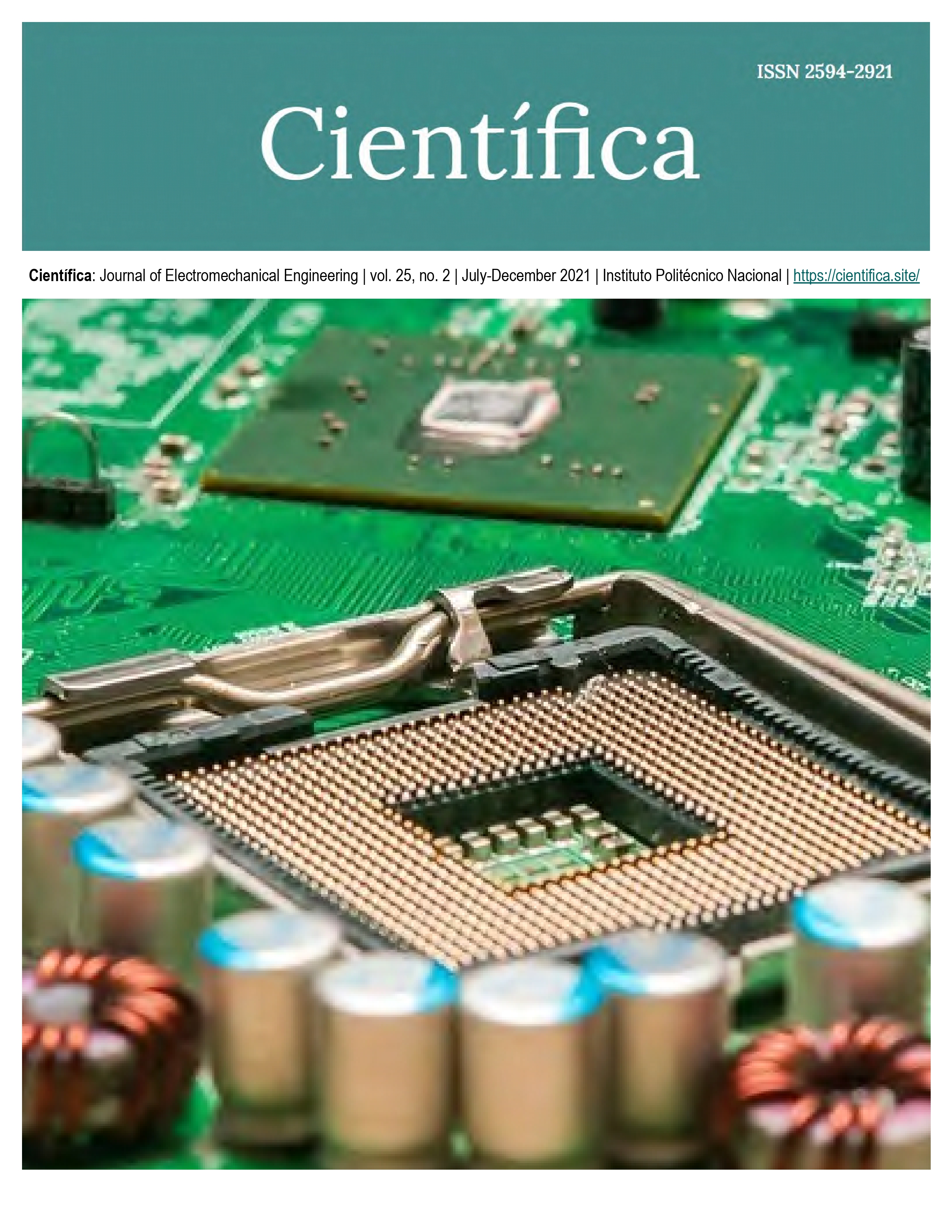Optimization of a lift mechanism for a hospital robotic bed
DOI:
https://doi.org/10.46842/ipn.cien.v25n2a06Keywords:
numerical optimization, genetic algorithms, mechanisms, actuatorsAbstract
CamaBot is a robotic hospital bed composed of four basic mechanisms (mattress support, panning mechanism, bed base and lifting mechanism). The lifting mechanism consists of two crank-sliding (CS) systems that together form a six-bar kinematic system. The problem that exists in the lufting mechanism is that due to the force exerted by the actuators on the slides, the supports and joints of the lifting mechanism presented mechanical failures due to tearing in welded joints. Currently, CamaBot is in operation from a redesign carried out at that stage. To solve the problematic presented in this article, we have applied a numerical optimization technique based on genetic algorithms using the Matlab® Genetic Algorithm ToolBox, to optimize the geometry of the CamaBot lifting mechanism by minimizing the force exerted by the actuators, aiming at solving the tearing problem at the welded joints.
References
E. Vázquez Santacruz et al. (2015), “Mechatronic Approach to an Intelligent Machine: the Case of an Assistive Device,” Research in Computing Science, 2015, vol. 100, pp. 115-127.
J. Lagrange, Obras de Lagrange, Gauthier-Villars, 1882.
L. Euler, “Leonhard Euler y los puentes de Königsberg,” Scientific American, vol. 189, no. 1, 1953, pp. 66-72.
D. J. Albers, C. Reid, “An interview with George B. Dantzig: The father of linear programming," The college mathematics journal, vol. 17, no, 4, 1986, pp. 292-314.
P. Pedersen, “On the optimal layout of multi-purpose trusses,” Computers & Structures, vol. 2, no. 5-6, 1972, pp. 695-712.
K. F. Reinschmidt, A. D. Russell, “Applications of linear programming in structural layout and optimization,” Computers & Structures, vol. 4, no. 4, 1974, pp. 855-869.
S. L. Lipson, L. B. Gwin, “The complex method applied to optimal truss configuration,” Computers & Structures, vol. 7, no. 3, 1977, pp. 461-468.
H. Ramírez, R. Márquez, F. Echeverría, O. Santiago, Control de Sistemas no Lineales, México: Pearson - Prentice Hall, 2005.
W. M. Jenkis, “On the application of natural algorithms to structural design optimization,” Engineering structures, vol. 19, no. 4, 1997, pp. 302-308.
W. Annicchiarico, M. Cerrolaza, “Optimization of finite element bidimensional models: an approach based on genetic algorithms,” Finite Elements in Analysis and Design, vol. 29, no. 3-4, 1998, pp. 231-257.
C. A.Coello, A. Christiansen, “Multiobjective optimization of trusses using genetic algorithms,” Computers & Structures, vol. 75, no. 6, 2000, pp. 647-660.
A. Rodríguez-Molina, M. G. Villarreal-Cervantes, M. Aldape-Pérez, “Indirect adaptive control using the novel online hypervolume-based differential evolution for the four-bar mechanism,” Mechatronics, vol. 69, 2020.
J. Muñoz-Reina, M. G. Villarreal-Cervantes, L. G. Corona-Ramírez. "Empirical Study of Constraint-Handling Techniques in the Optimal Synthesis of Mechanisms for Rehabilitation," Applied Sciences, vol. 11, no. 18, 2021.
R. L. Norton, Diseño de maquinaria: Una introducción a la síntesis y al análisis de mecanismos y maquinas, México; McGraw-Hill 1994.
J. Shigley, J. Uicker, J. Pérez, H. C. de Contín, Teoría de máquinas y mecanismos, México; McGraw-Hill. 1983.
R. P. Moreno, Análisis de mecanismos y problemas resueltos, España: Alfaomega, 2006.
S. C. Chapra, R. P. Canale, Métodos numéricos para ingenieros, México: McGraw-Hill, 2007.
Downloads
Published
Issue
Section
License
Copyright (c) 2021 Instituto Politecnico Nacional

This work is licensed under a Creative Commons Attribution-NonCommercial-ShareAlike 4.0 International License.

